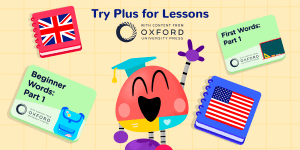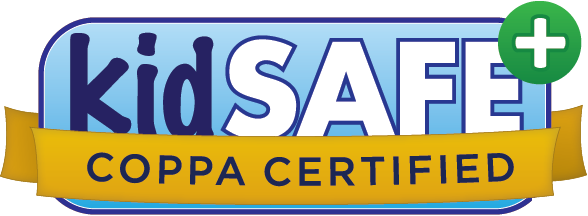Communication is one of the most important aspects of our relationships with others—especially our children! Children begin to develop communication skills from the day they are born and start interacting with their caregivers.
When we communicate with our kiddos, we teach them about love, respect, boundaries, and even safety.
What are the types of communication?
Verbal communication has to do with the words we use when speaking:
- Pitch (speaking in a loud voice vs. whispering)
- Tone (calm, firm, loving, gentle, angry, accusatory)
- Word choice (“Please speak more softly” vs. “Shut up” might mean the same thing but have very different connotations)
- Language/dialect (using words that your child understands)
Nonverbal communication has to do with body language:
- Physical touch (hugs, high fives)
- Hand gestures (thumbs up)
- Facial expressions (smiling, frowning)
- Eye contact (direct, indirect)
- Personal space (body autonomy)
Why Are Communication Skills Important?
When parents communicate with their children, they are teaching them how to interact with others and are helping shape kids’ emotional development.
Children will use the communication techniques that they learned from their caregivers long after they grow up and set out on their own!
What are the benefits of communication skills?
- Mental well-being
- Emotional intelligence
- Assertiveness
- Empathy and compassion
- Self-control and motivation
- Boundaries

10 Activities and Games to Support Communication Skills
Parents know that their kids are like sponges; they soak up everything they see and hear! Caregivers can model positive skills that will help their children grow to become effective communicators.
Playing fun activities and games with kids is a great way to introduce positive communication skills!
1. Guess the Object
- Place an object in a bag and give clues to help your child guess what it is.
- For example, if you are hiding a spoon, you could say: “It’s small.” “It’s silver.” “It’s a tool we use to eat food.”
- After modeling how to play, let your child pick an object to hide. Then, ask them questions until you guess correctly!
2. Telephone
This is a classic game from childhood! It’s best to play with 3 to 5 people, so you can get the whole family involved.
- Have everyone stand in line.
- Start with an easy sentence, like “The ball is red.”
- Whisper the sentence into your child’s ear without letting anyone else hear.
- Then your child must whisper it to the person next to them.
- The last person in line gets to say the sentence out loud.
Most of the time, it changes from the original sentence to something much funnier! After a few rounds, you can make the sentences more and more complex.
3. Show and Tell
- Gather the whole family together for “Show and Tell.”
- Each family member needs to pick out a favorite item from their room.
- One of the adults should go first to model how to play.
- Show off your favorite item and explain why you love it so much, where you got it, and how it works.
- After modeling how to play, let your child go up and deliver their speech!
To make the game a little sillier, the game can also be done with “least favorite” items… will your child go straight for the broccoli or their toothbrush?
4. Picture Storytelling
This is a great activity to teach children new vocabulary words and sequencing.
- Start with one photo and have your child tell you everything they see. For example, if it’s a farm photo, they might say: barn, cat, farmer, pig, straw, cow.
- Then, have your child invent a story about what they see in the picture.
- You can help prompt them by saying, “The farmer brings food to the animals in the barn” or “The cat is unhappy because she has to share her food with the pig.”
- Encourage your child to be silly and let their imagination run wild!
You can make this game more complex by giving your child a set of images that tell a story. Have your child arrange the images to show what happened first, next, and last. Then ask them to tell the story of what happened by adding their own details.
5. Chain-link Story
This is a fun game that encourages creativity and quick thinking!
- Grab a ball and sit in a circle.
- Start off the story by saying something like, “once upon a time there was a baby dinosaur…”
- Then, pass the ball to someone new and have them add to the story.
- Keep passing the ball and adding to the story until it comes to an end!
6. Charades
“Charades” is a family favorite and a great way to teach kids nonverbal communication.
- Write down a bunch of different emotions and place them in a bowl.
- If your child cannot read yet, you can draw the emotions (and help them act when it’s their turn).
- Each player must grab a piece of paper from the bowl and act out what it says… without speaking!
- Then, the rest of the players must guess what the emotion is.
7. Ten Questions
This game helps strengthen kids’ critical thinking and problem-solving skills.
- One person must think of an animal, but they can’t tell anyone what it is.
- The other players have 10 chances to ask questions about the animal in order to figure out and guess what it is!
- For example, players might ask: “Does it have a tail?” “Does it live in the ocean?” “Does it have fur?”
8. Obstacle Course
Obstacle courses help kids strengthen their active listening skills.
- Use household objects like frisbees, shoes, chairs, pillows, etc. to set up an obstacle course.
- To create an obstacle course, you’ll need a starting point and a finish line.
- Set up your household items in between these two points and give instructions like:
- Hop on each frisbee
- Go around the shoe
- Crawl under the chair
- Spin 3 times in the hula hoop
- Help guide your child as they make their way through the course, and don’t forget to celebrate them when they make it to the finish line!
9. Exact Instructions
This game is bound to make your child laugh and sigh in frustration! It’s a great way to practice clear and effective communication.
- Tell your child that you want to make a peanut butter and jelly sandwich, and you need them to tell you how.
- Set out all the ingredients you need: bread, peanut butter, jelly, a knife, and a plate.
- Do the literal action that your child tells you. For example, if they say “put the peanut butter on the bread,” place the whole jar of peanut butter on the bread.
- Then, prompt them to give you clearer instructions. They might say, “spread the peanut butter on the bread.” In this case, maybe stick your fingers in the jar and spread it on the bread with your hands!
Eventually, your child can learn to be more specific. This fun game will surely help you all laugh through your tears of frustration! Click here to check out this dad’s hilarious experience playing with his children.
10. Role-Playing
Role-playing games help stimulate creativity and imagination.
- Let your imagination run wild and act like police officers, firefighters, nurses, vets, astronauts, etc. Pretend to be mermaids, grocery store clerks, or even shooting stars!
- While playing, communicate your needs and ask for help. For example, if you’re role-playing veterinarians, you might hold up a horse figurine and ask your child to help it relax while you fix its hoof!
The possibilities are endless and you will see how much your little one enjoys playing with you.
Communication and Lingokids
Interested in learning more about our games and activities that support kids in learning communication skills? Download the app and check out the content on our YouTube channels!
What are your tips and tricks when it comes to communicating with your child? Let us know by commenting below!






